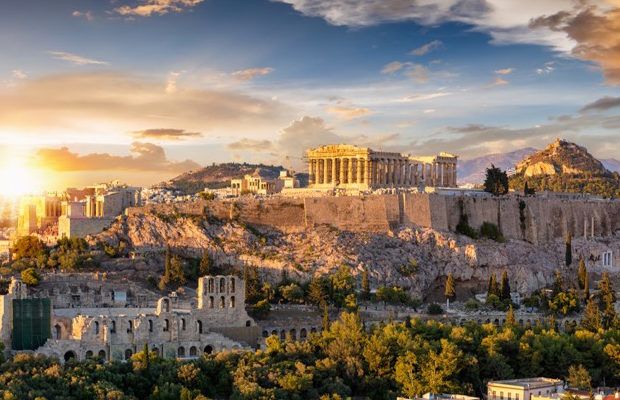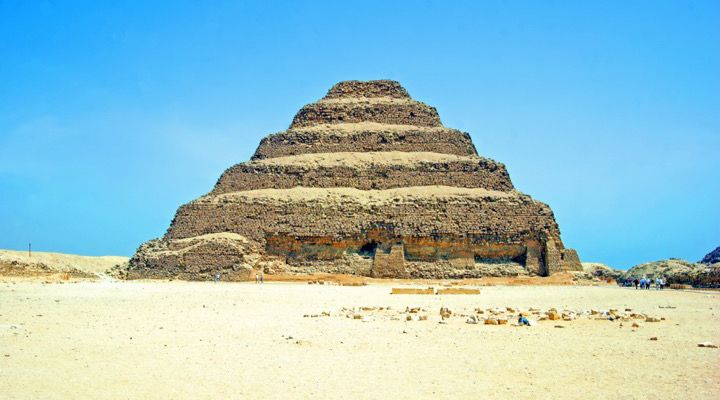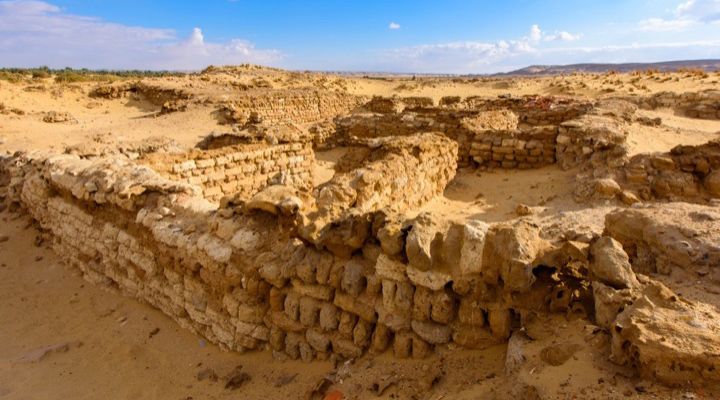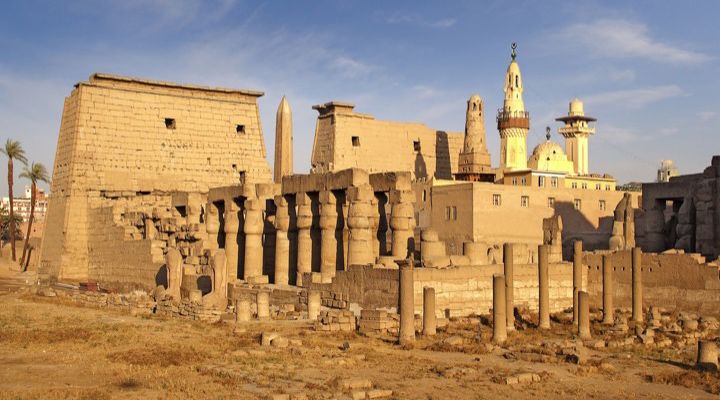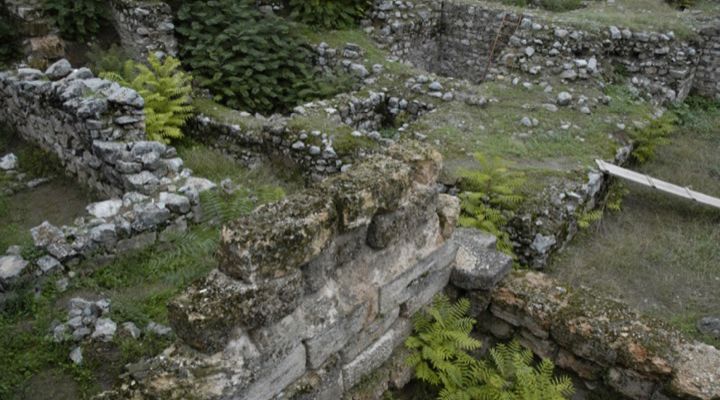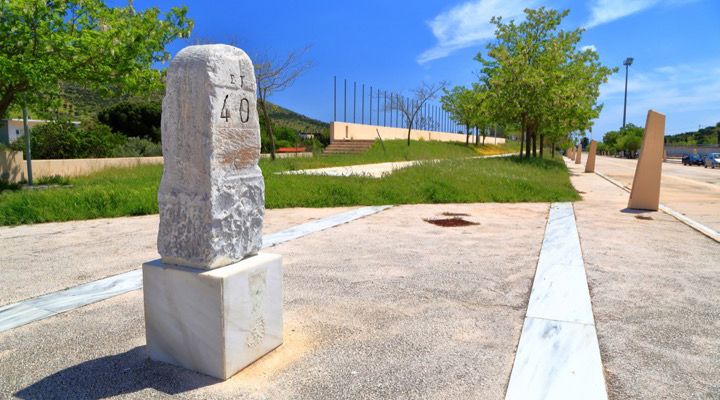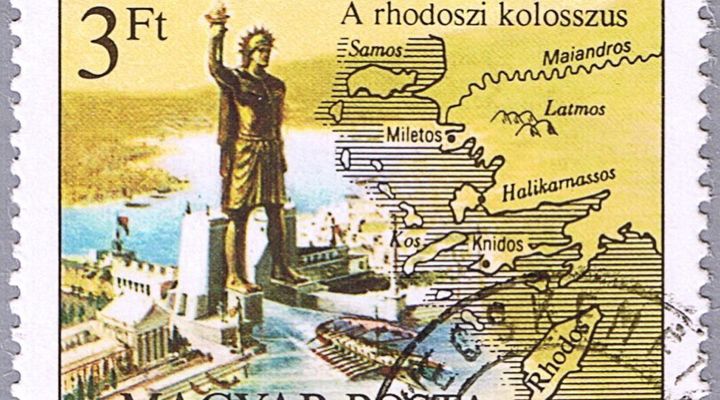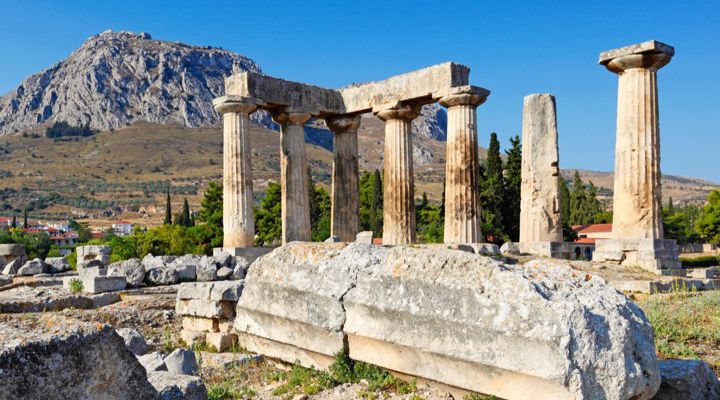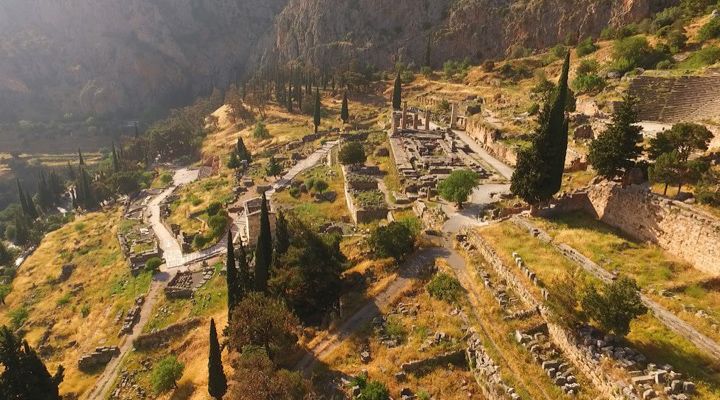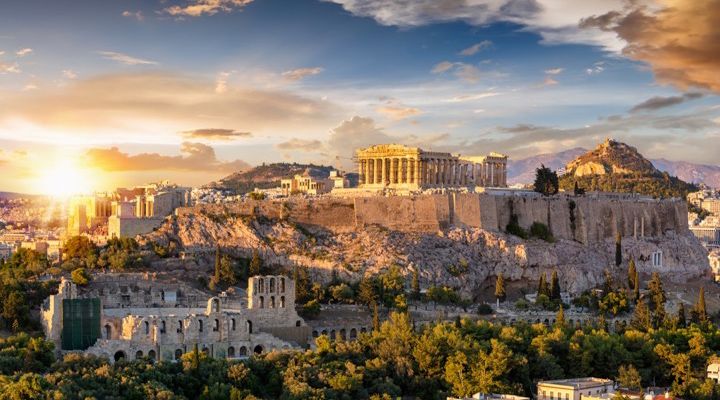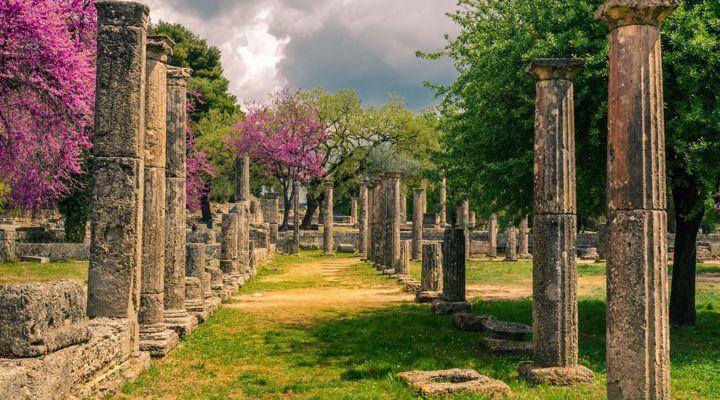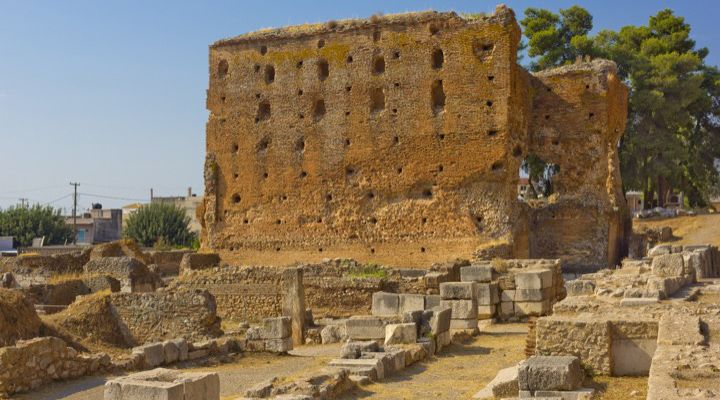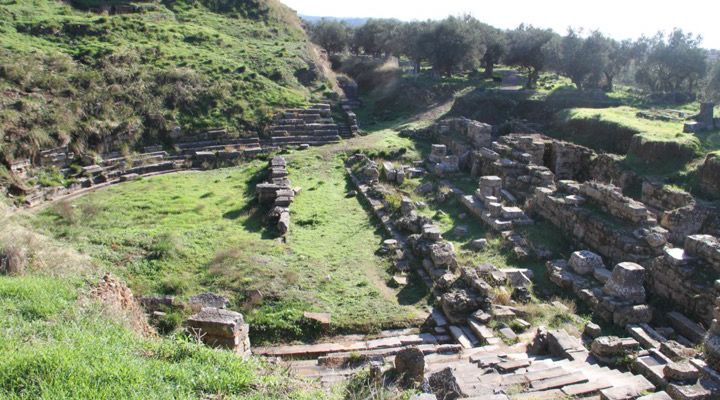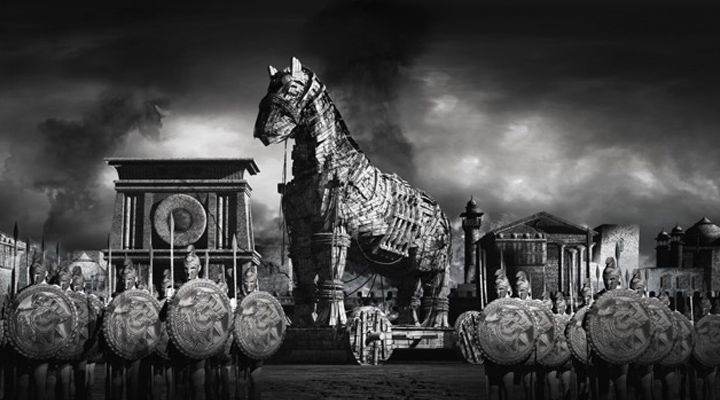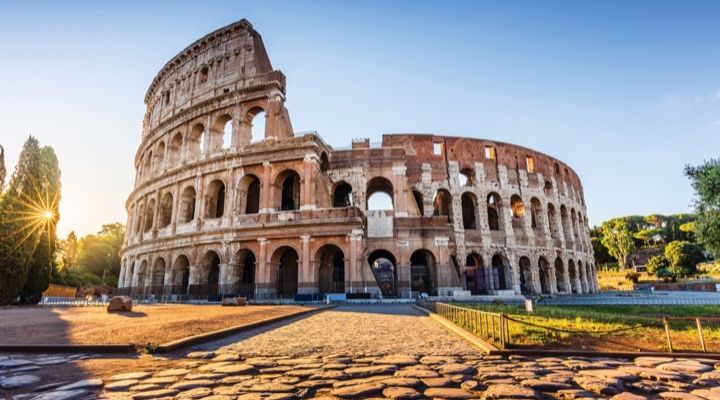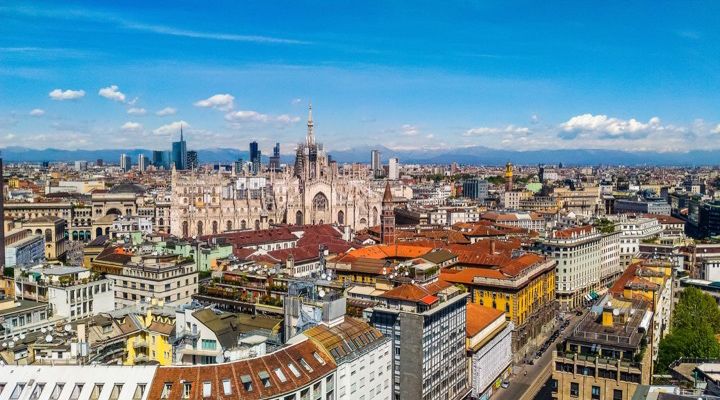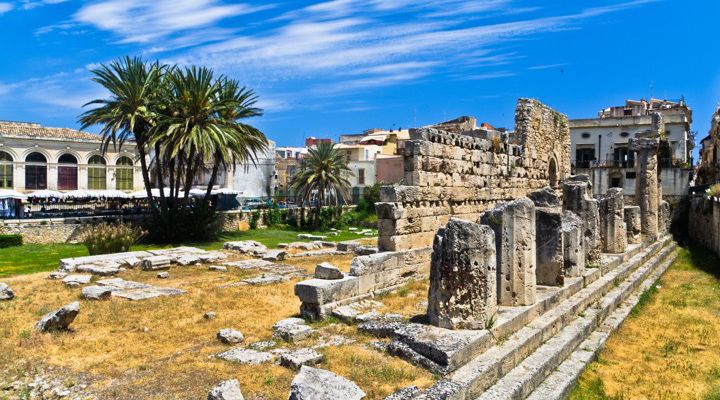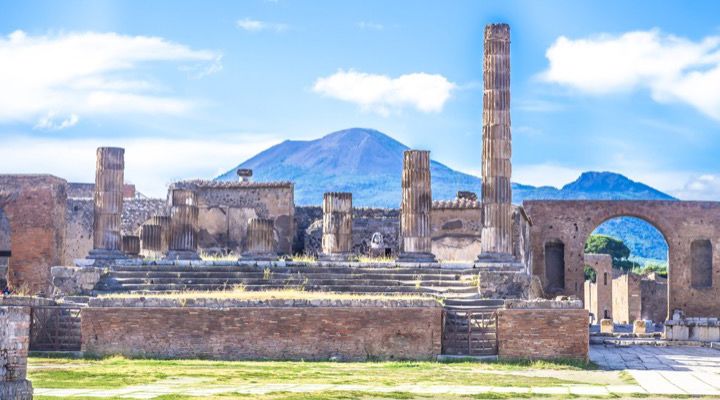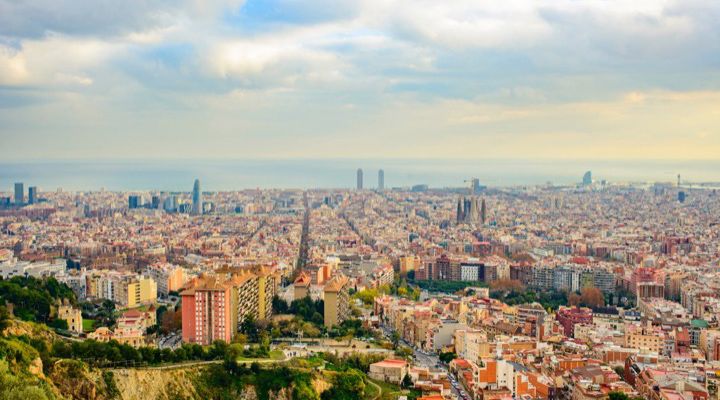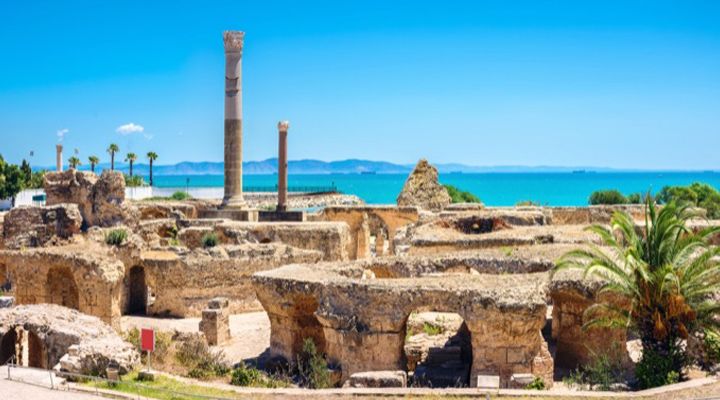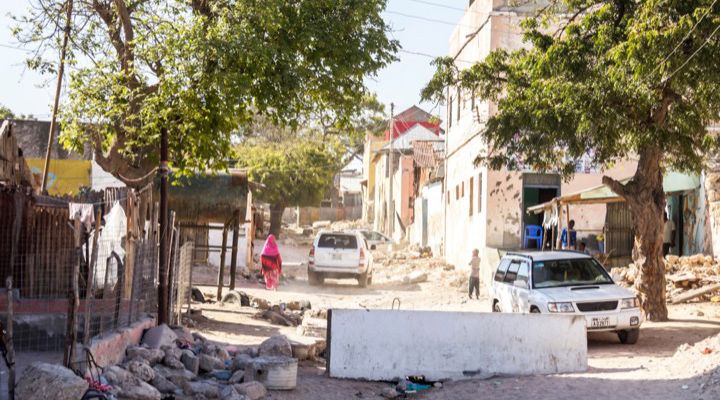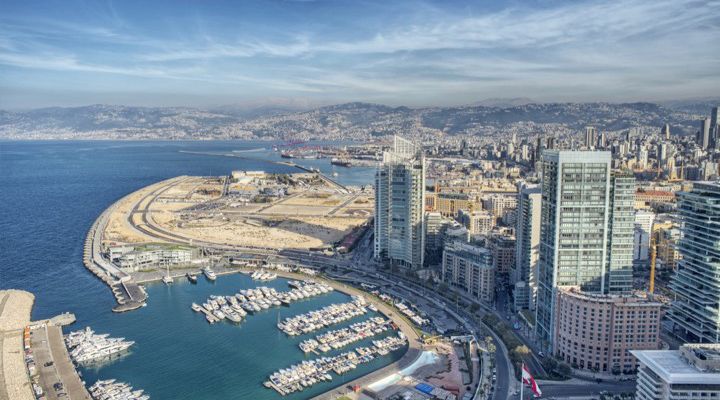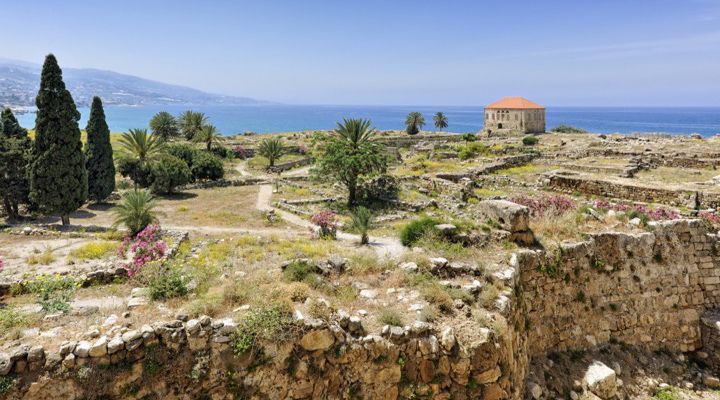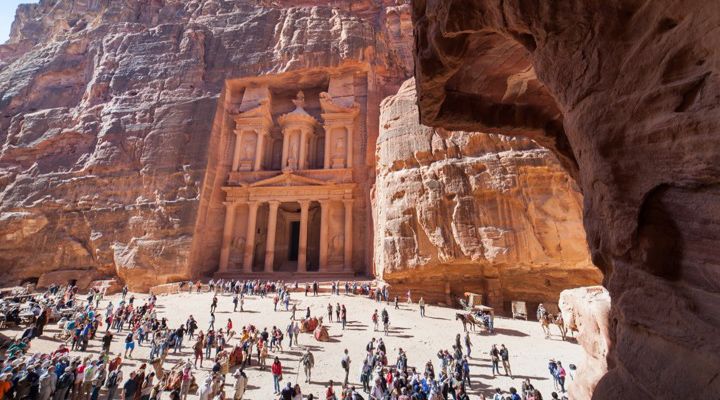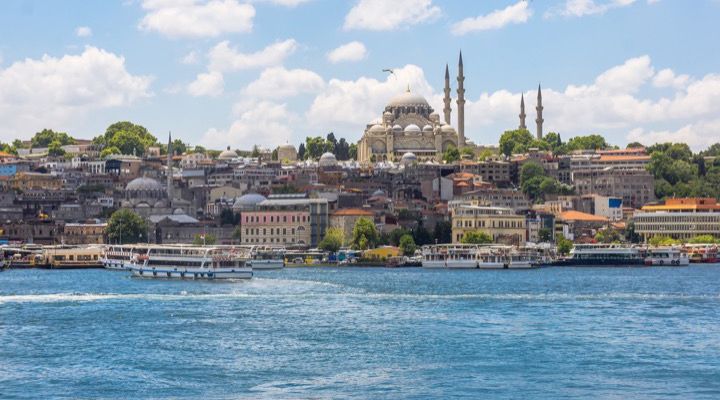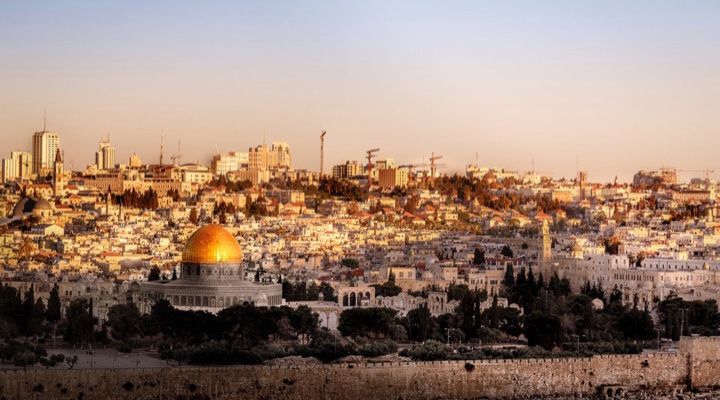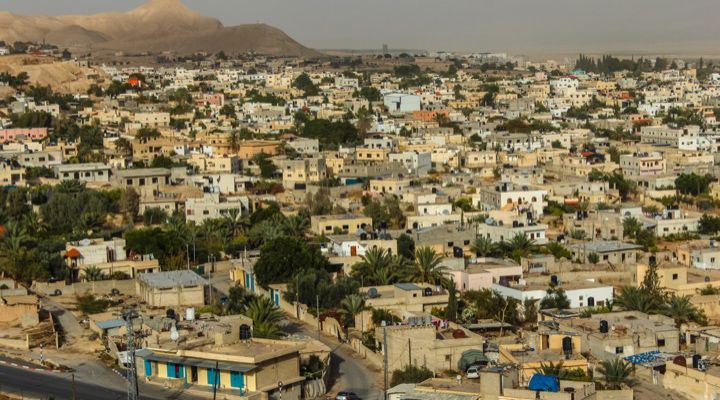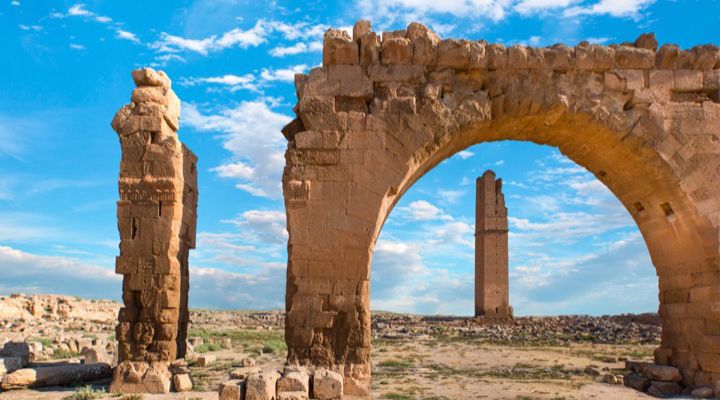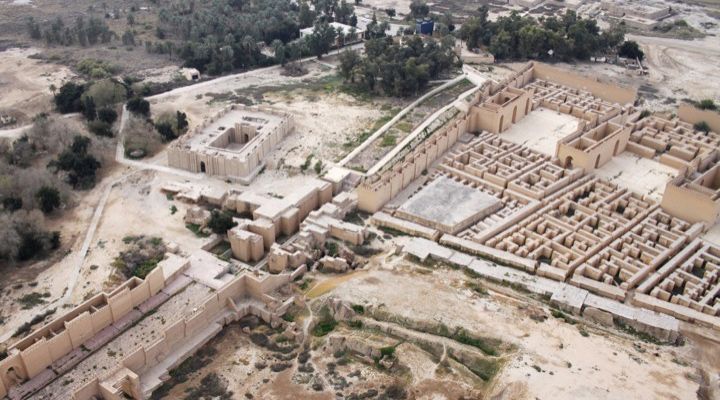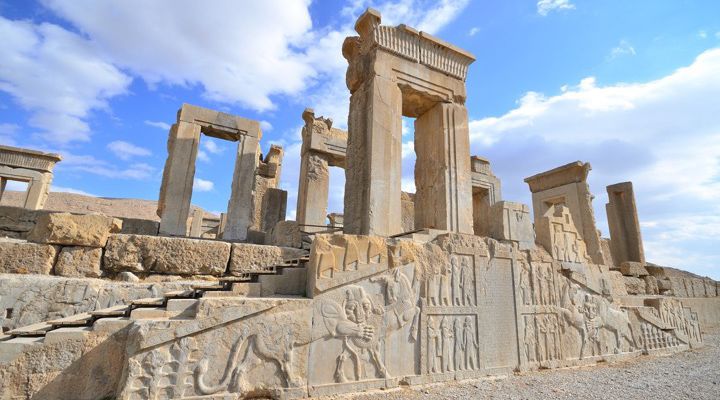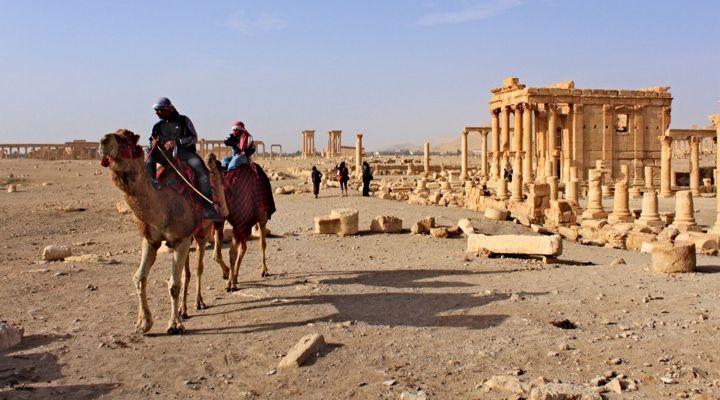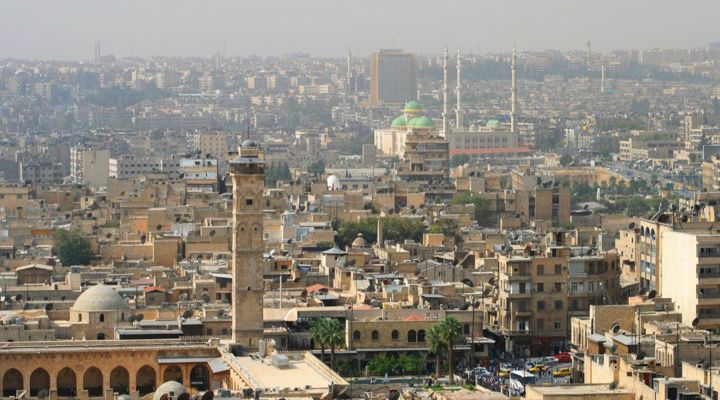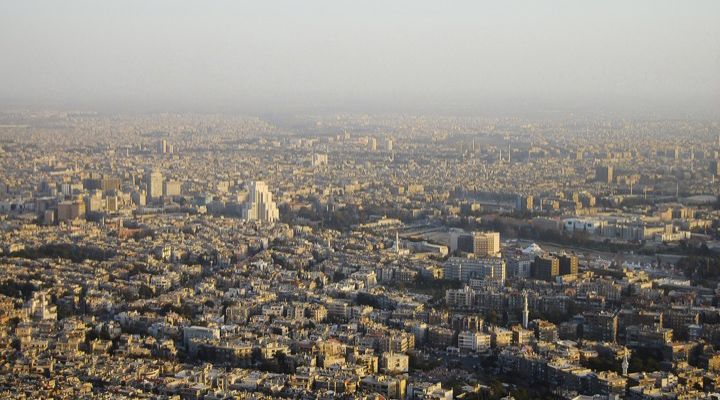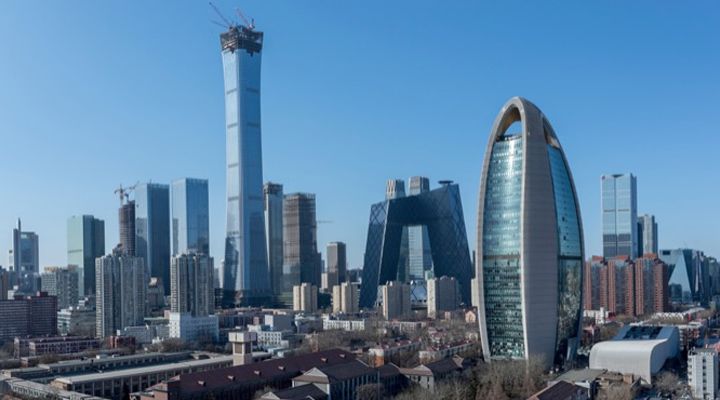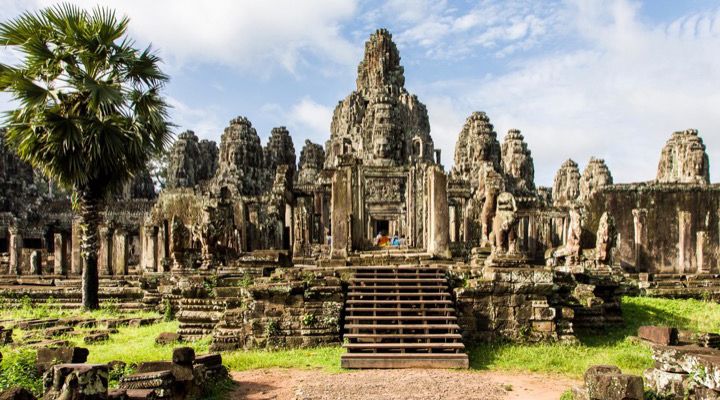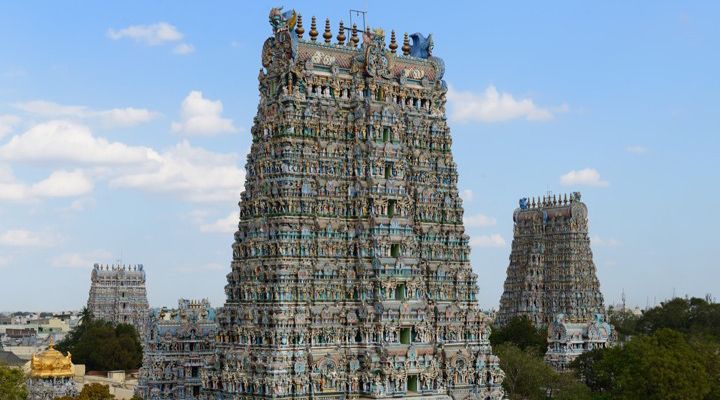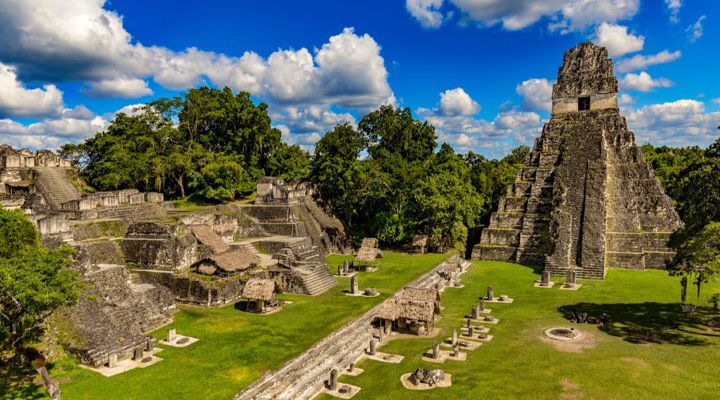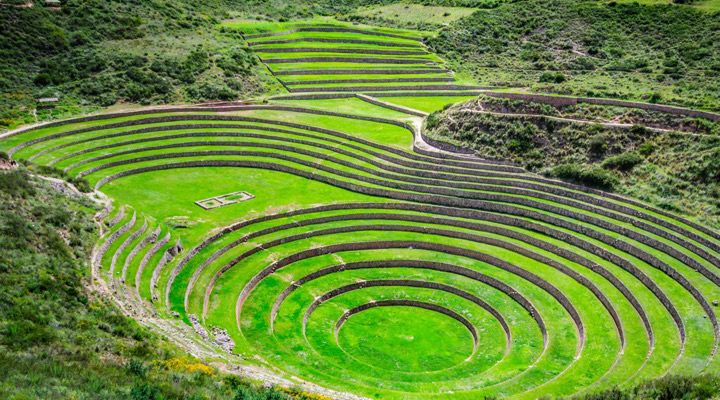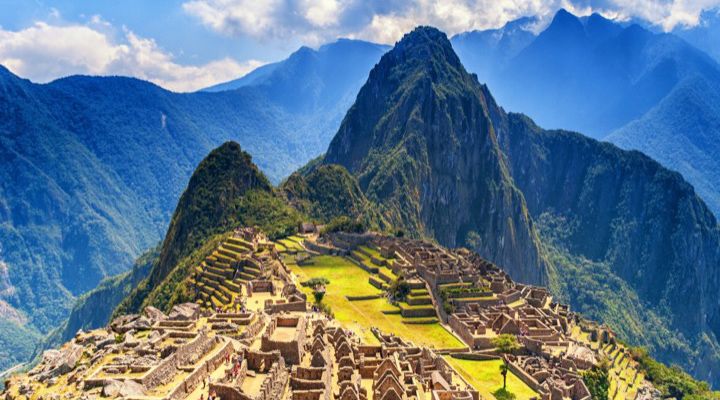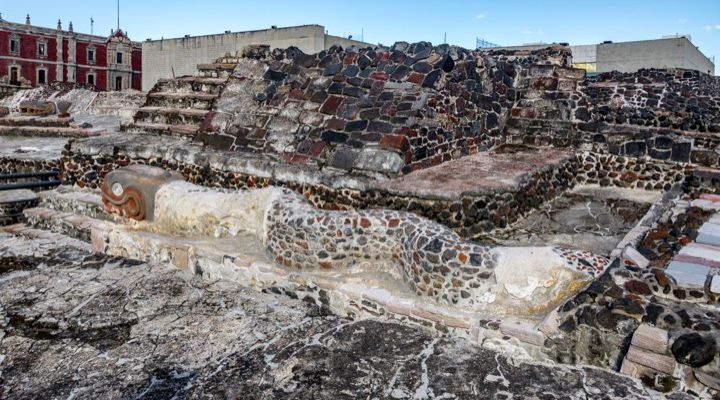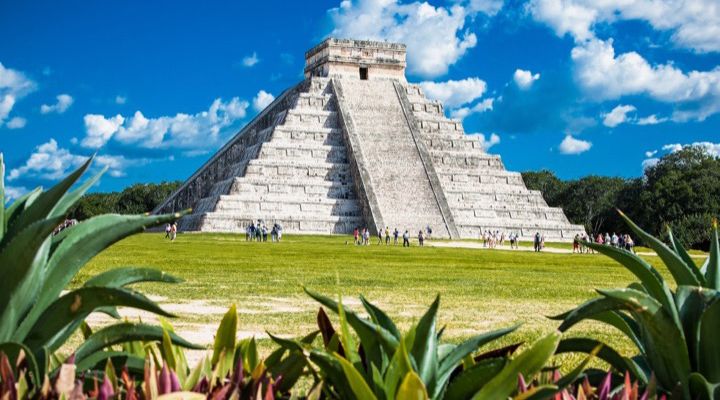Since the beginning of human history, people have congregated in cities. We built them in places where it would behoove us to do so; on or between rivers, adjacent to farmland, or smack dab in the middle of trade routes.
Though many have fallen to ruin, some of our world’s most ancient cities have actually persisted. They have withstood the test of time, war, and natural disasters. Here are 40 amazing facts about some of the world’s most ancient cities…
Walking in Memphis
Memphis isn’t just a city in Tennessee. That one was actually named after a 5000-year-old city in Egypt founded by King Menes. The world-famous Rosetta Stone, which helped us to learn ancient languages including Ancient Egyptian Hieroglyphics was originally called “The Memphis Decree.”
Library and Lighthouse
Many people know that Alexandria was once home to the fabled Library of Alexandria, one of the wonders of the ancient world; one reputed to have held more than 500,000 books before it burned down. But few know that Egypt’s largest, wealthiest city also had a great lighthouse as well.
Thebes One
Another ancient Egyptian city, Thebes, actually may have been the world’s first inhabited major city. That was when it was known as Luxor and may have had people living there as early as 3200 BC. Within the city was the massive temple of Karnak, which acted as a religious center, a beacon for many ancient Egyptians.
Thebes Two
The other Thebes of the ancient world was located in Greece, though it only became relevant many years after old Luxor lost its luster. In the 4th century BC, the Greek Thebes actually rivaled Athens and Sparta for popularity and was the purported birthplace of the mythical heroes Hercules and Oedipus.
Running On Empire
There is a reason that marathons are officially 26.2 miles long. They are measured this way because of the city of Marathon, Greece, where the ancient Greeks won a great victory against the superior forces of the Persian Empire. After the battle, a messenger ran all the way to Athens to warn them about the Persian fleet. It was a distance of 26.2 miles.
Colossal Guardian
They say that the fabled Colossus of Rhodes was one of the most imposing statues ever to behold. Legend says the statue stood 105 feet high. It towered above the city for decades, warning anyone that might approach that the people of Rhodes were mighty indeed. Sadly, an earthquake destroyed the wonder in 228 BC.
The First Corinthians
In ancient times, the Greek city of Corinth sat on the small strip of land that connects mainland Greece to the Peloponnese. This prime location made Corinth a very important trade city. It is said that St. Paul wrote First Corinthians to the Church of God at Corinth sometimes in the first century AD.
Seek the Oracle
When the ancient Greeks wanted to speak to the Gods or else hear what their future might be, they headed to Delphi in order to talk to the Oracle. This legendary Oracle at Delphi was said to dwell in the first temple at Delphi in the 7th century BC. Leaders from all Greek principalities traveled to heed the Oracle’s advice.
Athenian Traditions
Athens has been lauded as an integral part of how Western culture developed for centuries. In the time of the ancient Greeks, it was a rich and powerful city-state and the birthplace of Democracy. It remains an important part of modern Greek culture as well, serving as the nation’s capital and one of the most popular centers of tourism.
Ancient Gamers
For over a century now, the Olympics have been a peaceful way for nations the world over to come together in the spirit of cooperation and competition. These events can trace their origins to the ancient Greek city of Olympia, and the Pan-Hellenic games that were once held there every four years in honor of Zeus.
True Argonauts
The city of Argos is actually the oldest known city in all of Greece going all the way back to prehistoric times. It had been continuously inhabited by human beings until 395 AD when the Visigoths destroyed it. Before that though, it remained an important settlement in both Mycenaean and Classical Greece.
This is Sparta
Today, ancient Sparta lies in ruins, but it used to be one of the two most important city-states in all of ancient Greece. It’s known for both its legendary warrior culture and the fact that a fabled 300 Spartans stood before an army of thousands of encroaching Persians. It’s also known for the queen it once had and the war started over her love.
Trojan Mythos
Much of what Homer wrote in the Iliad and the Odyssey is pure myth, especially when it comes to the Odyssey, but the ancient city of Troy very likely existed. If it did, it probably sat on the west coast of Turkey and was built with high, thick walls to prevent invasion. Sadly, because the Greeks won, no solid evidence of its existence had ever been found.
When in Rome
The legend says that the city of Rome was founded by the twin brothers Romulus and Remus in 753 BC. The legend also says these twins were raised by a she-wolf. Regardless of the unlikeliness of this story, there is no doubt that the Republic of Rome would become a prominent and enduring city the world over, both before and after the rise of Christianity.
Capital City
Today, Milan is the fashion capital of the world, but people have lived in the city since around 400 BC. Surprisingly, the Italian city wasn’t founded by the Romans, but by the Gauls from France. It wasn’t conquered and converted until 222 BC and renamed Mediolanum and after that, Roma Secunda.
Greek Founders
The city of Syracuse was not always an Italian city. Before the Romans conquered it, this large and influential city was originally a Greek colony. It was founded in 734 BC and controlled most of the island of Sicily and much of Southern Italy. It also happens to be the birthplace of Archimedes.
Buried in Ashes
Today, all that remains of the ancient city of Pompeii is an ash-covered metropolis, half-buried in the earth. In 79 AD, the thriving Roman city was caught unawares and completely unprepared by the volcanic eruption of Mount Vesuvius. The remains of its citizens weren’t discovered until nearly 2000 years later, all perfectly preserved.
Finding its Way
The Spanish city of Barcelona can trace its origins as far back as 5000 BC. In Roman times, the fairly large city might have actually only been a small town. Once it was annexed, however, Barcelona really found its stride and grew prodigiously under the reign of Emperor Augustus, around the first century AD.
Elephant in the Empire
Carthage is most known for General Hannibal marching war elephants over the Alps to defy the most powerful empire of the time. Before that though, Carthage was founded in 813 in what would become modern-day Tunisia. It was such a huge trading hub throughout the Mediterranean, that Rome had to have it. Ultimately though, Rome would choose to destroy it for Hannibal’s insolence.
Trade City
People have been living and trading in the modern day Somali city of Mogadishu for thousands of years. We know this because a number of ancient Greek scholars wrote about it before the Arabs even founded Mogadishu in the 10th century. The Somali trading hub the Greeks spoke of was apparently located right on that spot.
Very Old Names
The ancient city of Beirut, located in Lebanon has apparently been mentioned in texts going back to the 14th century BC. According to those texts, the Lebanese city was founded by Canaanites and its name is a derivation of the ancient Canaanite word for “well.” In the Roman age, Beirut became a combination trading city and military base.
Biblical Nomenclature
The Greeks called the ancient Phoenician city of Gebal, Byblos, and it is because of this name that the Bible itself got its name. One of Byblos most important trading goods was papyrus, an early type of paper. It was such a cash crop for them that the Greeks named if after their word for book, biblos. This, in turn, became Bible in time.
Covered in Sand
Petra, which lies mostly covered in sand in modern Jordan, is among the most popular tourist destinations for amateur explorers today. In 400 BC, when it was first built, the Nabateans used the bustling desert city as a trade hub, but it was eventually forgotten and sank into the desert sands. Today, it is presumed that at least 85 percent of the city is still buried.
They Might be Giants
The city known as Istanbul was originally founded by the Greeks in 657 BC. Back then, they called it Byzantium. Hundreds of years later, the Roman emperor Constantine moved the capital of his empire there and it was named Constantinople in his honor after he died. In the 20th century, its name became Istanbul.
The Holy City
Even today, the correct placement and ownership of Jerusalem is widely contested by many cultures in the region. Control of the city has changed hands many times over its 6000-year existence. Nevertheless, it remains one of the most important cities in history to members of the Jewish, Christian, and Muslim faiths.
Walls of Jericho
Today, the city of walls that was once Jericho is located on the West Bank, but people have been living there permanently since around 9600 BC. That makes Jericho the world’s oldest city. It also has the distinction of having the oldest protective wall surrounding a city, one mentioned in Biblical texts and the remnants of which are over 9000 years old.
World’s Largest
Mesopotamia was one of the most ancient civilizations known to man. And the Iraqi city of Ur is one of the most ancient cities on this entire list. Founded as a small fishing village in about 5000 BC, Ur would eventually become one of the largest, wealthiest cities in the entire world. Only for a short time though, as it fell to ruin by about 450 BC.
Rule of Law
Babylon is, next to Rome, one of the most iconic cities on this list. It was found in about 2300 BC by the ancient Mesopotamians and was home to fabled Hanging Gardens of Babylon, one of the seven wonders of the ancient world. It’s first king, Hammurabi, wrote down the first law codes in human history.
Place of Columns
Persepolis was once the capital city of the great Persian Empire. It was once the home of Darius, Cyrus, and finally Xerxes. Eventually, though, it was destroyed by Alexander the Great and the locals began calling the now-ruined city, “the place of forty columns.” For the next 1000 years, it remained little more than a legend, until it was rediscovered in 1618.
Desert Jewel
Few people know about Palmyra, the desert jewel which was once one of the most vibrant, well-traveled trade hubs in all the ancient world. Unfortunately, the modern Syrian civil war and subsequent conflicts have reduced much of this ancient city to an even more ruined state. Though archeologists are working to preserve whatever they can.
East Meets West
A few years ago, the word Aleppo was bandied about quite a bit. This was mainly to do with the current situation in Syria, but long before it was a negative topic of conversation, Aleppo was an important trade city that stood as a bridge between the eastern and western worlds. It has been controlled by many over the centuries but reached new heights under Arab rule in the 12th through 17th centuries.
Contested Rule
Similarly, the city of Damascus has been controlled by many different cultures over its many thousands of years. Established in the 3rd millennium BC, Damascus has had people living there since 8,000 BC and has been controlled by the Greeks, Romans, Byzantine, and Islamic peoples. This in turn gives the city a remarkable and varied architectural feel.
Nearly a Million
Beijing is one of the largest cities in the world today and people have been living there for a very, very long time. Though the modern city as established in the 11th century, archeologists recently discovered a human ancestor known as Peking man, who may have lived in that specific region as far back as 700,000 years ago.
Spectacular Temples
Between the 9th and 15th century, the Khmer Empire ruled much of Southeast Asia. Their capital, located in what is now Cambodia, was the formidable city of Angkor. Today, the ancient city is home to the famous temple complex of Angkor Wat, as well as many other impressive ruined Hindu temples.
Eastern Athens
Since the 3rd century, Madurai has been one of the most beautiful cities in all of India. The ancient people who built it designed it to look like a lotus flower, with a great temple at the very center. Madurai has long been a center of trade and learning, earning it the very appropriate name “The Athens of the East.”
Lost in the Jungle
At one point, several thousand years ago, Tikal was one one of the greatest cities in the Mayan Empire. Founded in 300 AD, the city resides in what is now modern-day Guatemala and though it’s great pyramids have been retaken by the jungle, they remain clear indications of its former grandeur.
The Emperor’s New Groove
The city of Cuzco, which was designed to be shaped like a Puma, was once the capital of Inca civilization. By 1500 AD, the Incas were the largest empire in the Americas and Cuzco was home to not only grand temples and palaces but around 150,000 people. The city eventually fell to ruin when the Inca Empire fell.
Machu Ricchu
Machu Picchu may seem like it was one of the most ancient cities on earth, but it’s actually not as old as one might think. The city was built by an Inca statesman named Pachacutec sometime in the 1400s and was more of a getaway for Inca aristocrats than a proper city. It was sort of like a summer house for the rich and was abandoned after only about 100 years.
Missing Lake
Finally, we come to the Aztec empire, whose capital of Tenochtitlan used to sit on the banks of what was once the massive Lake Texcoco. The lake, unfortunately, dried up in 1345 AD but was once the center of the Aztec world for nearly two centuries. When the Spanish arrived, they laid siege to the city and built their capital of New Spain upon its ashes.
In Plain Sight
Many believe that the popular pyramids of Chichen Itza were once lost to the world, but this is a fallacy. Unlike many other grand and now lost Mayan cities, Chichen Itza had never truly been forgotten, just written off for a time when the Spanish took over. Before that though, between 1200 and 750 BC, the pyramids were the center of the now-forgotten Mayan empire.
